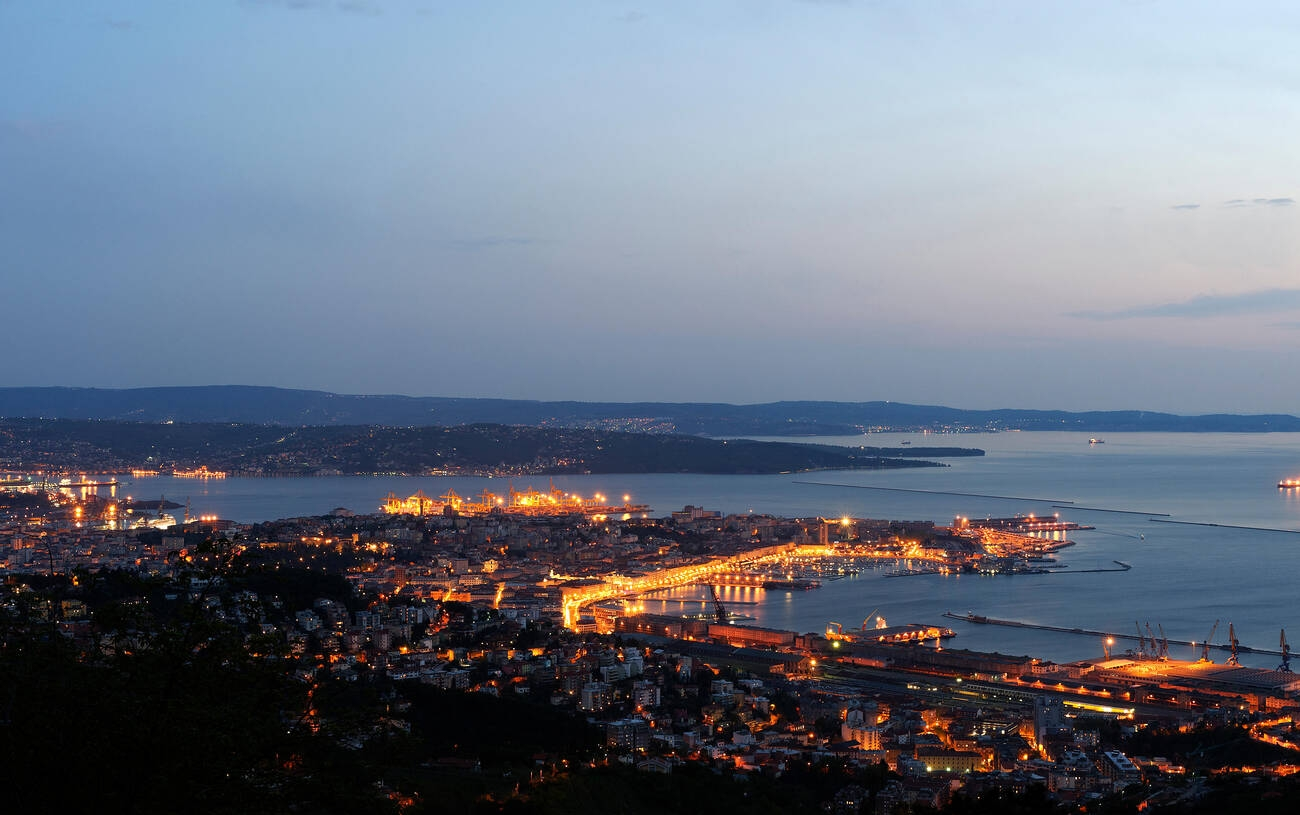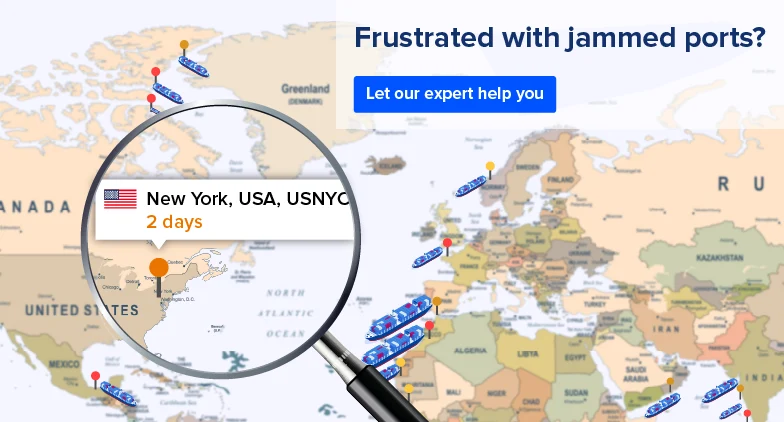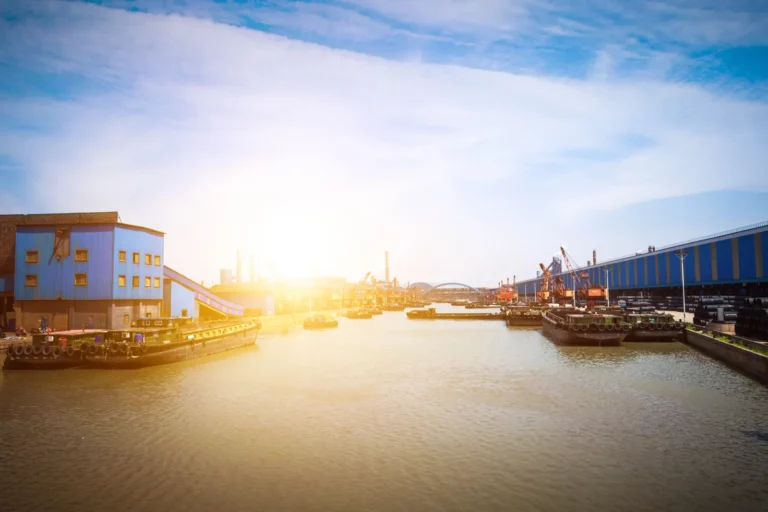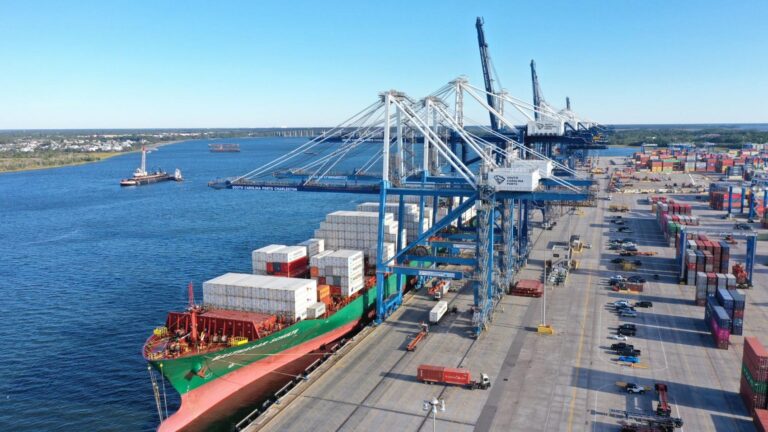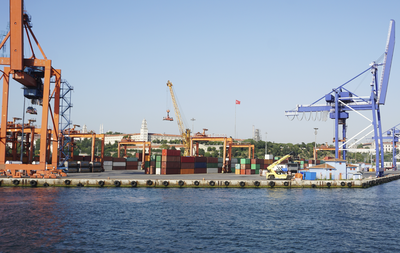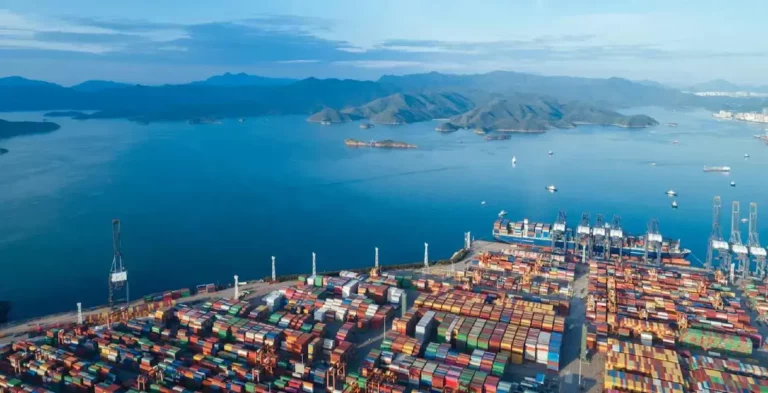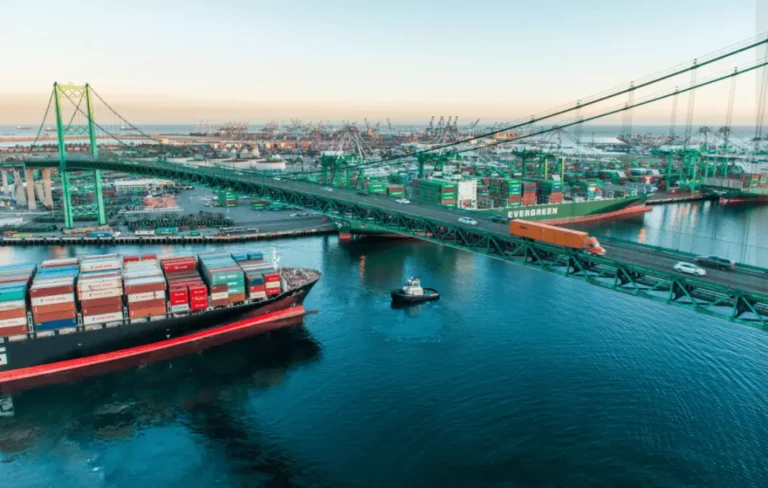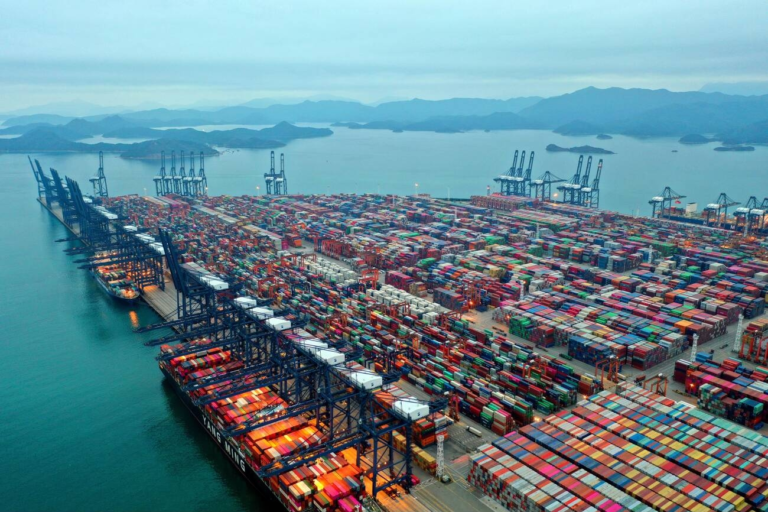Italian Ports: Navigating Through Global Trade and Modernization
Italy’s true historical gems are alive and kicking on the water! Carved by time and tide, these legendary ports aren’t relics of the past, they’re thriving arteries pumping life into the global trade network.
Imagine cobalt waves lapping at ancient harbors – these very docks witnessed empires rise and fall, and now they’re the bustling hubs of the 21st century.
Italy’s ports are nature’s darlings. Their enviable Mediterranean perch grants them unparalleled access to key trade routes and natural harbors. From the Adriatic gateway of Trieste to the Tyrrhenian treasure of Genoa, these ports have been powerhouses for centuries, linking Europe, Asia, and Africa.
These ports are economic powerhouses, handling a staggering amount of cargo. Giants like the Port of Gioia Tauro, renowned for its container expertise, move millions of TEUs annually. Meanwhile, the versatile Port of Livorno juggles everything from cruise ships to refined oil, showcasing Italy’s diverse maritime muscle. These seafaring hubs are the lifeblood of the Italian economy, creating jobs, fueling industries, and boosting the nation’s GDP.
So without further ado, let’s dive into the top 15 Italian ports of 2025!
Port of Trieste
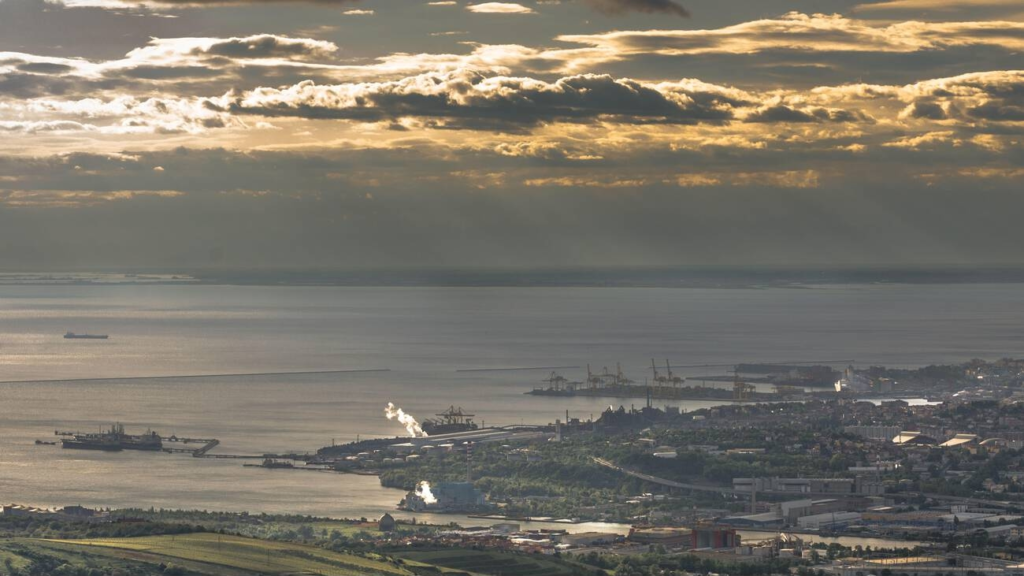
The Port of Trieste, located in the Friuli Venezia Giulia region in the northeast of the Italian mainland, is the largest port by gross tonnage and has a capacity of 62.68 million tonnes as of 2018. The five free port zones that make up this large port are the Old, New, Timber, Mineral Oils, and Industrial regions. These zones are further divided into two industrial and three commercial zones. The industrial sectors, which house industrial facilities and lumber, are located in the Canale di Zaule Free Area and the Mineral Oils Free Area. A multifunctional terminal (the Adria), container terminals, ro-ro, and ferry terminals are examples of further free port zones.
In addition to its importance to the sea, the Port of Trieste is well-known for its attractive architecture, which attracts visitors to its shoreline that is lined with warehouses, offices, and workshops. The port, which dates back to the early 1700s, expanded after the Suez Canal was opened, securing its strategic location on the Adriatic coast and enabling it to serve Central and Eastern Europe.
Port of Genoa
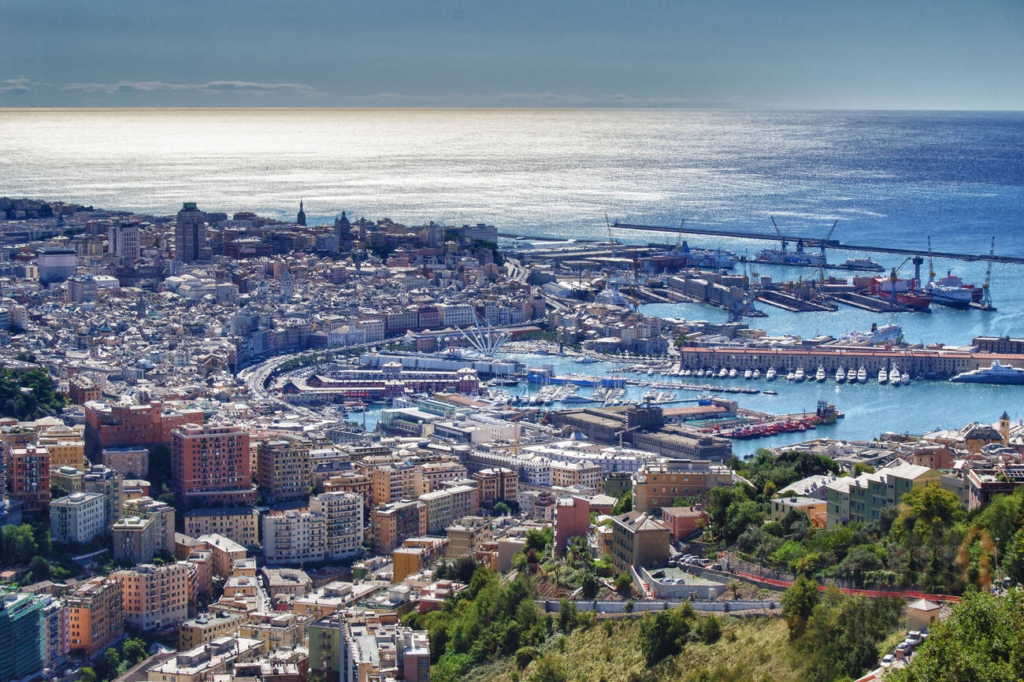
Situated in Liguria on Italy’s Western coast, the Port of Genoa is one of the nation’s biggest ports, handling a significant amount of traffic. With an artificial harbour covering more than 60 square kilometres, Genoa is a key hub for trade and commerce, competing with other European ports like Marseille and Barcelona. With more than 8,000 ships docked there each year and more than two million TEUs of containers handled, the port is essential to the movement of commodities like coal, steel, oil, chemicals, and general cargo.
Four strategic inlets guide traffic in Genoa: the Eastern inlet serves the terminals at Porto Vecchio and Sampierdarena; the Western inlet (Cornigliano) is used by ILVA docks; the Multedo inlet is for oil carriers and connects to the shipyards of the Fincantieri Group; and the Pra’ inlet is for container vessels. Interestingly, the port handles over 4 million passenger movements a year thanks to its 13 ferry slots and five cruise docks. In order to increase port capacity, cruise terminals are being built, and marinas that serve yachts include Exhibition Centre, Duca Defli Abruzzi, Molo Vecchio, Porto Antico, Genovo Aeroporto, and Pra’. Tourists are drawn to historical sites inside the port premises, such as the Lanterna and Punta Vagno lighthouses.
Port of Livorno
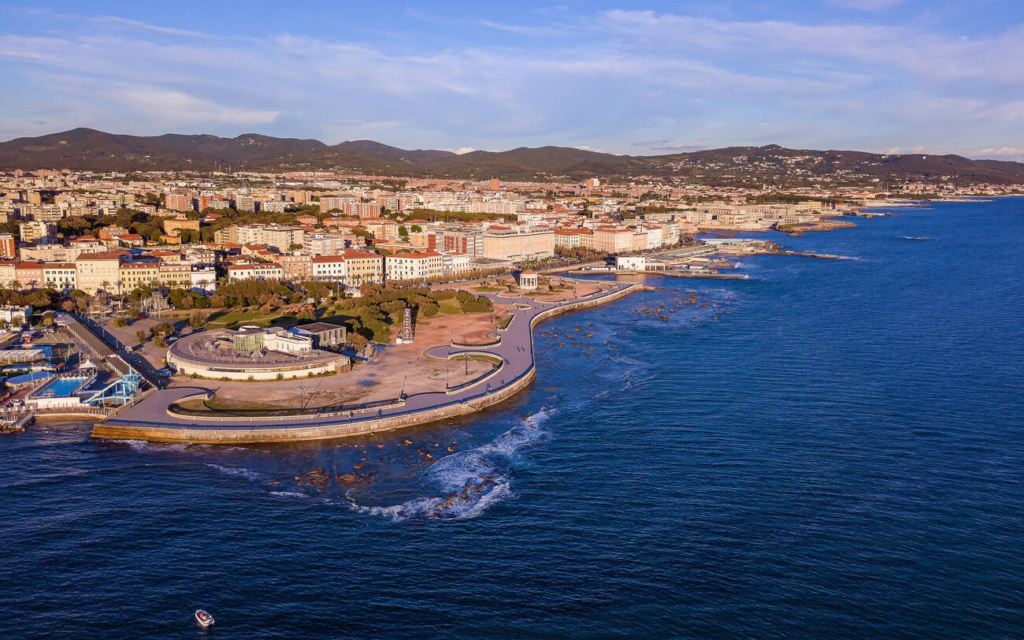
Located on Italy’s western coast along the Ligurian Sea, the Port of Livorno is a major marine hub that handles an annual cargo transit. Livorno’s advantageous location along the Tyrrhenian Sea Corridor makes it easy to handle a wide range of vessel types, such as ferries, cruise liners, general purpose ships, liquid and dry bulk, and ro-ro. Livorno, which has ferry connections to Tuscany, Emilia Romagna, Marche, and Umbria, can handle around 10,000 ships a year, handling almost 0.8 million TEUs and 3.5 million passengers in 2018.
Avamporto and Bacino Santo Stefano are the two basins that make up each of the port’s two operating zones, Porto Vecchio (Old Port) and Porto Nuovo (New Port). The St. Stefano basin specialises in cargo involving oil and gas, whereas the New Port mostly deals with industrial exports. The shipyards of well-known Italian shipbuilder Benetti are incorporated into Avamporto.
Livorno Port is home to a number of nearby lighthouses, such as Molo Mediceo, Diga della Vegliaia, and Fanale dei Pisani. The port’s terminals include those for LNG, break bulk, containers, cars, frozen food, metal shipping, and multipurpose use. Notably, the LNG terminal—which is co-owned by Endesa and Amga and was opened in 2007—is an important component of the port’s varied activities and handles a variety of goods, including non-ferrous metals and copper.
Port of Cagliari
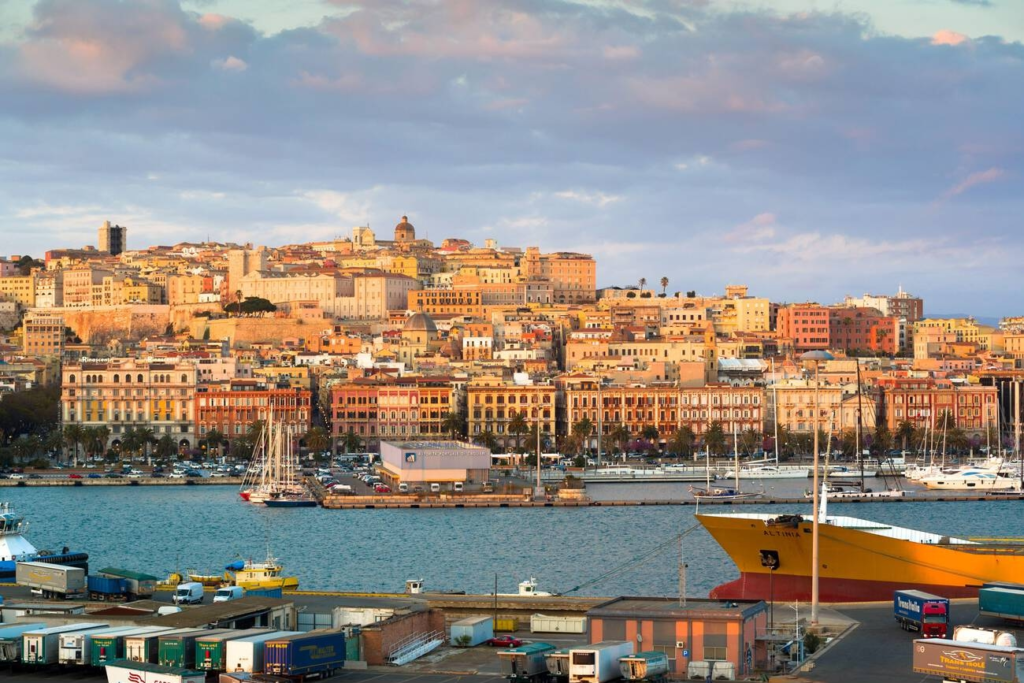
Situated on Sardinia Island, the Port of Cagliari is a natural harbour encompassing an area of more than eight square kilometres. With 29 berths and more than 50 wharfs, this significant Mediterranean Sea port can handle around 8,000 vessel dockings annually. Cagliari, one of the biggest ports in the Mediterranean, can handle 50 million tonnes of cargo and one million TEUs. It provides a wide range of services, including bulk products, general cargo, ro-ro, transhipment, containers, passenger traffic, fishing, and pleasure vessels.
Cagliari is strategically located next to the Gibraltar-Suez passage, making it an important maritime route. The Cagliari Port Authority is in charge of maintaining more over 30 kilometres of shoreline in Cagliari. The port is split into two areas: the canal port, which has 1.6 kilometres of quay serving transhipment and ro-ro vessels over five berths, and the historic port, which has nearly 6 kilometres of quay handling commercial, passenger, and ro-ro vessels.
Furthermore, special facilities that can accommodate over 15 ships at once serve the oil and petrochemical industries. The Cagliari International Container Terminal (CICT), one of the biggest ports in Italy, is home to container ships.
Port of Gioia Tauro
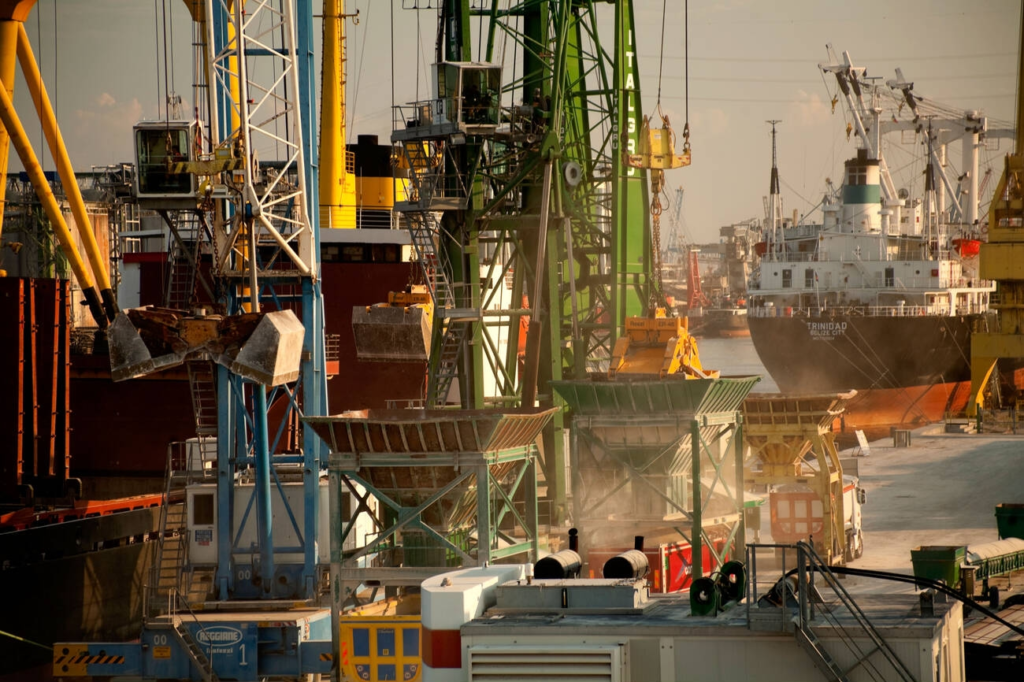
The Port of Gioia Tauro is a major Italian mainland port that is situated close to the Gibraltar-Suez route. It is situated in Reggio Calabria, close to the Straits of Messina, which is adjacent to Sicily. It is acknowledged as the biggest container port in Italy and is ranked ninth in Europe and sixth along the Mediterranean coast. With its 18-meter natural depth and more than 5 kilometres of docks, the port is a major hub for container shipments using specialised equipment.
Covering 4.4 square kilometres, the port runs parallel to the shoreline and has a 300-meter-wide inlet that empties into a basin that is 750 metres wide. There are 3.4 kilometres of docks on the east side and an additional 0.8 kilometres on the west side, with a 250-meter-wide waterway. Even though the port frequently handles giant container ships with capacities greater than 15,000 TEUs, smuggling problems have hindered the port’s growth in comparison to other significant Italian ports. Because organised crime is so common, illegal narcotics are frequently seized. The port has anti-piracy squads that work with law enforcement to prevent smuggling and unlawful shipping in order to combat these issues.
Port of Ravenna
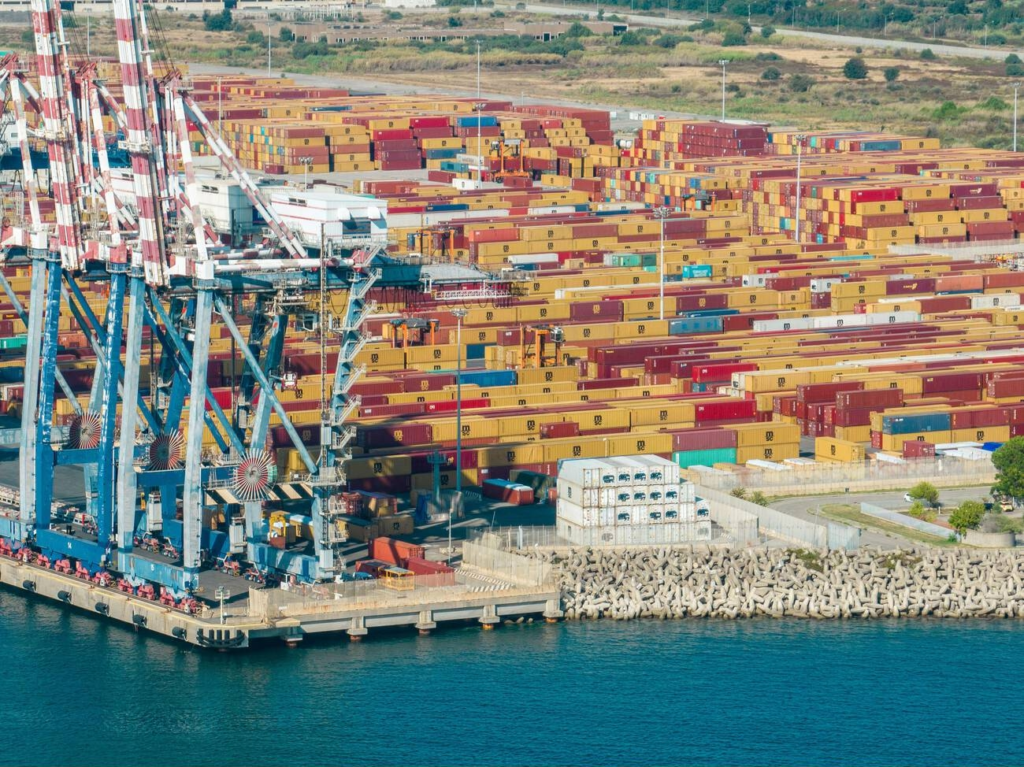
Ravenna, an Italian seaport with links to the TEN-T Networks, is situated on the coast of the North Adriatic. The port is a major hub with regular passenger connections to both internal destinations and neighbouring European countries, including ferries to Catania and Brindisi in Italy and Igoumenitsa in Greece. It specialises in bulk cargo, containers, general cargo, and passenger traffic. Its strategically significant location is further enhanced by its close proximity to the ports of Venice and Florence.
Equipped with passenger, container, and multipurpose cargo handling terminals, the port serves a number of sectors, notably the adjacent oil sector, which has been partly responsible for the closure of nearby enterprises. Fertilisers, animal feed, industrial produce, agricultural products, and foodstuffs are frequently shipped. The Port of Ravenna, which has 12 kilometres of docks and offshore breakwaters in Porto Corsini and Marina di Ravenna, is vital to both domestic and foreign trade.
Port of Venice
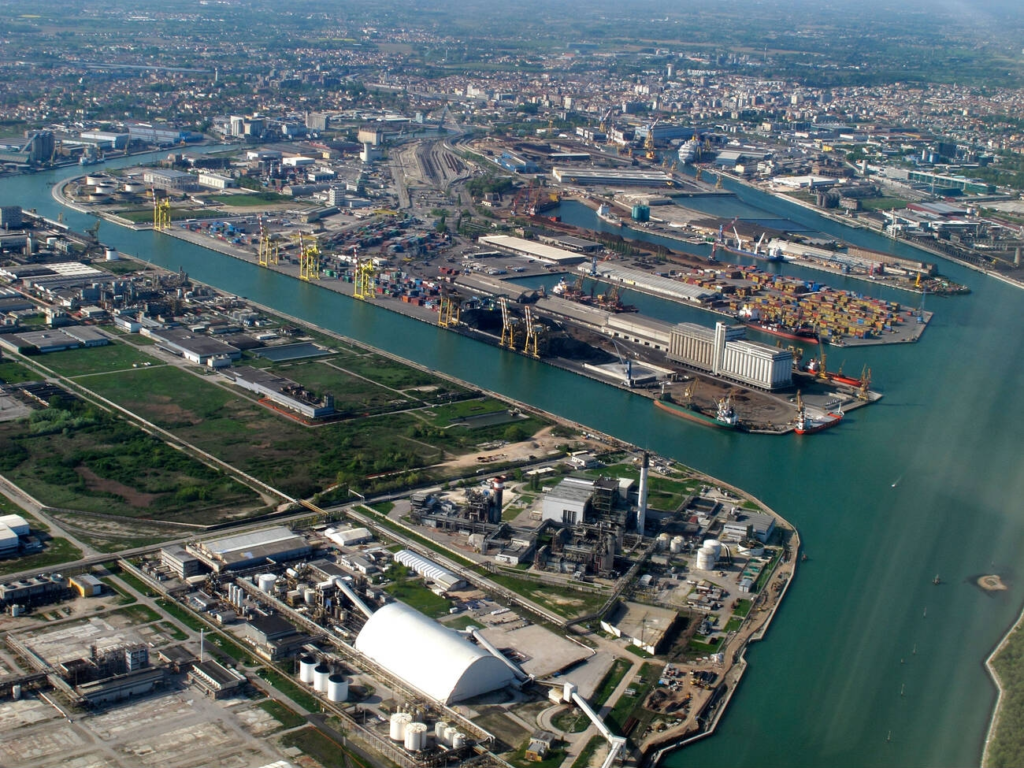
Located on the Adriatic Sea in the northeast of the Italian mainland, Venice is a popular tourist destination with a growing passenger and cargo industry. Despite being located interior, the commercial industry is important for delivering commodities to nearby countries and regions, and it draws a significant amount of passenger traffic. Frequently exported commodities include jewellery, fish products, local handicrafts, and containerised freight.
As a major port in Italy and a major centre for cruise ships and super yachts cruising the Mediterranean coast, the Port of Venice handled over 50 million gross tonnes of cargo and approximately 50 million passengers in 2017. Strategically located, it is an essential component of the trans-European network and benefits from a naturally occurring coastal breakwater that can accommodate ships longer than 200 metres.
The state-of-the-art ports consist of seven commercial terminals, one passenger terminal (Venezia Terminal Passeggeri, or VTP), and seventeen other miscellaneous terminals that manage general cargo, project cargo, ro-ro vessels, and liquid cargo. The harbour also has oil ports that service well-known companies including Decal, Petroven, and San Marco Petroli. PSA Vecon, Transped S.p.A., Euroports Terminal Rinfuse Venezia (TRV), Terminal Intermodale Venezia, and Terminal Intermodale Adriatico are examples of commercial terminals.
Port of Messina
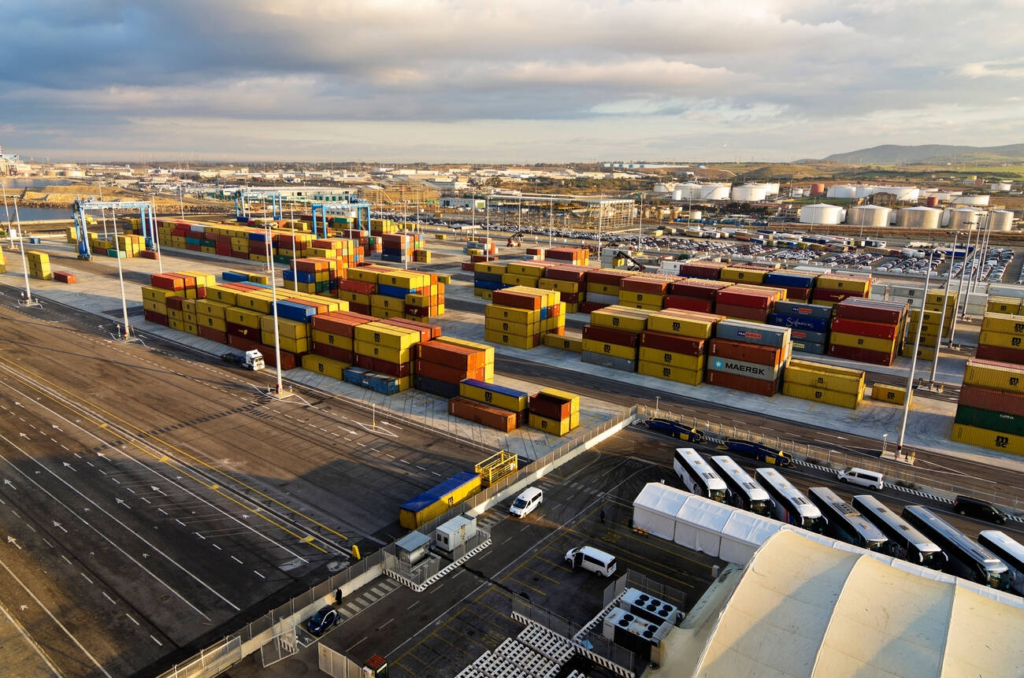
The Port of Messina is a busy harbour located on the northeastern coast of Sicily, situated on the other side of the small strait dividing the island from mainland Italy. One of the biggest ports in the area, this well-known port acts as a centre for a variety of passenger ships, with an annual passenger transit rising from 0.2 million in 2005 to 1 million in 2019. The port, which is situated on the western side of the Straits, has a 0.82 square kilometre natural harbour that is rather wide and deep.
The 400-meter-long inlet and 40-meter-average basin depth allow the docks to accommodate a wide variety of vessels, including megaships and cruise liners. The port has terminals with large lift cranes for cargo handling services. The port is an essential component of regional mobility because of its excellent train connections to the surrounding areas, which include the Messina Marittima and Messina Centrale stations. The yearly total tonnage includes the nearby harbour of Milazzo, which serves as Messina’s satellite port.
Port of Augusta
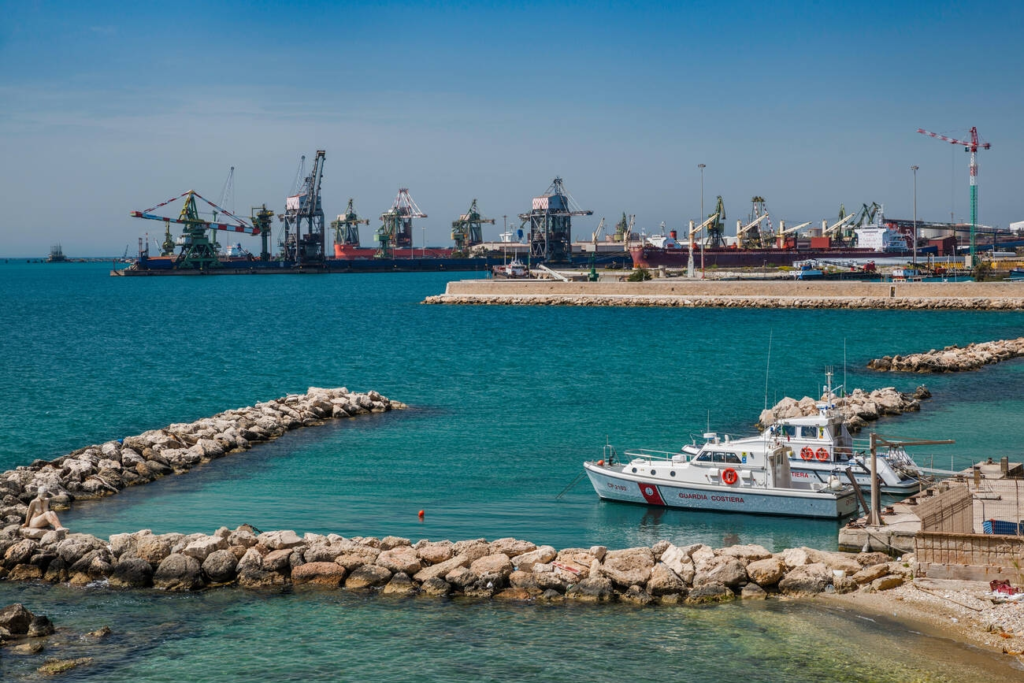
Situated near Naples on the island of Sicily, Augusta is an important port in southern Italy. The port serves the maritime and commercial trade needs of the Syracuse area by enabling the transportation of a wide range of commodities, such as oil and gas, fertilisers, and inorganic chemicals. It has played a major role in the growth of the adjacent Augusta Priolo petrochemical complex, which is home to major industrial companies including Sincat, Liquigas, Ilgas, Sotis, and Tifeo (a power-focused company).
Port of Augusta is a strategically significant Italian Naval outpost that dates back to the early 20th century, in addition to its commercial significance. It is now a Southern Command Base and was crucial to the Allied landings during World War II. The Augusta Bay Port Facility houses the US Navy’s Sixth Fleet, which is in charge of managing operations in Europe and Northern Africa, in addition to the Italian Navy. With Porto Megarese, Porto Xifonio, and Seno del Priolo under Sixth Fleet control, the port has played host to multiple NATO and Mediterranean exercises.
Port of Taranto
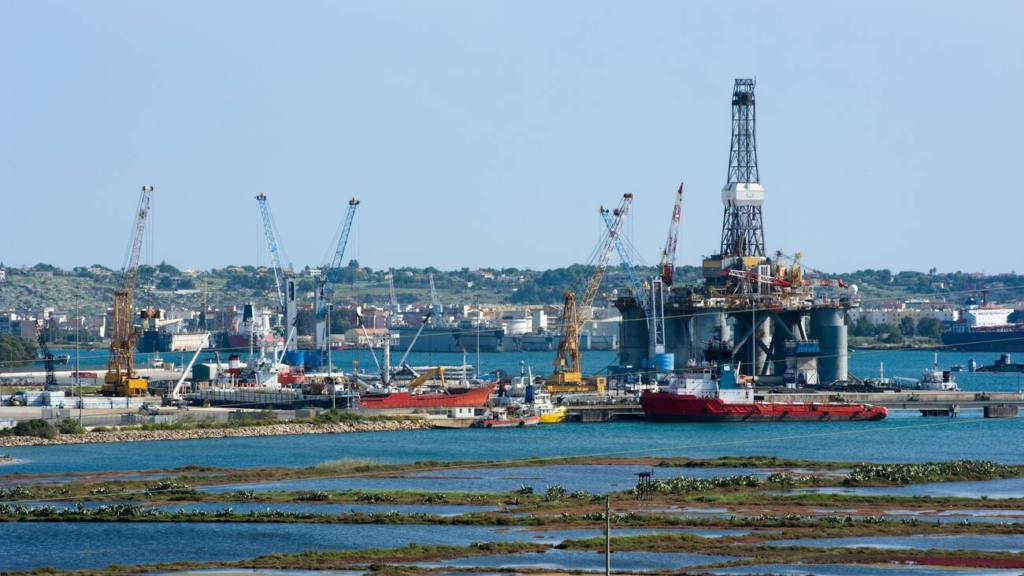
With almost a millennium of service under its belt, the Port of Taranto is one of Italy’s most important naval and commercial ports. This essential port makes it easier to handle a variety of vessels, such as those transporting local products, containerised commodities, and general cargo.
The surrounding area emerges as a major industrial centre in Italy, home to refineries for oil and petrol, steel and iron, chemicals and food processing facilities. In addition, naval shipyards are close to the port. With a focus on transshipment, the main container terminal, Taranto Container Terminal S.p.A., has been in operation since 2011. Interestingly, Hutchison Whampoa and Evergreen Marine Corp. collaborated on it.
Port of Naples
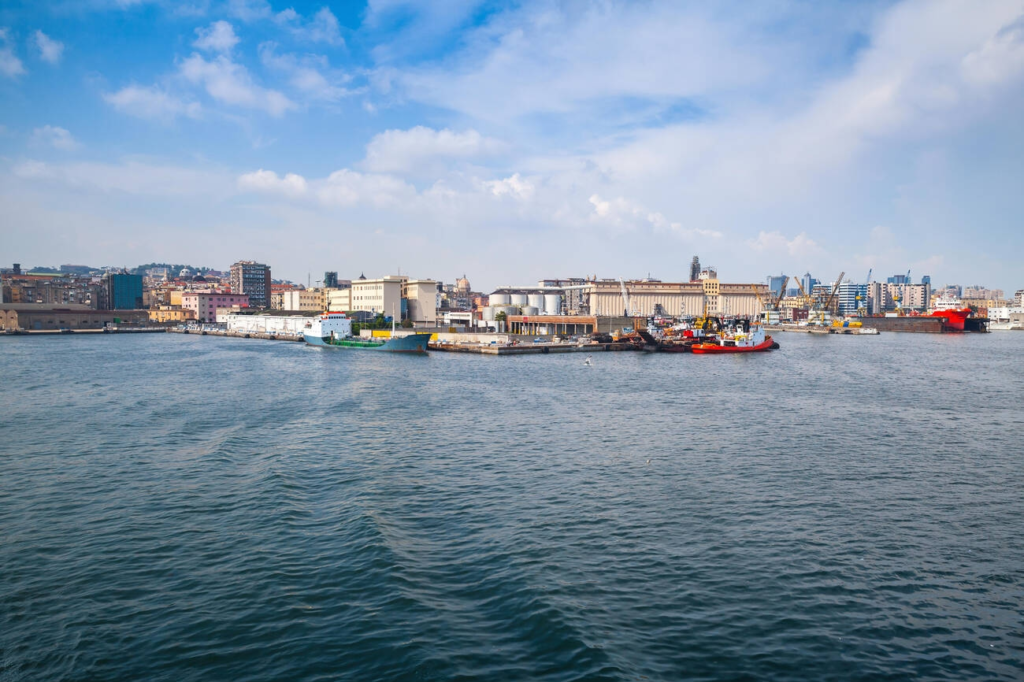
Port of Naples, which occupies more than 3 square kilometres of port area, is a prominent seaport on the Western coast and one of the biggest ports in Italy and the Mediterranean. The port’s vast facilities, which manage a variety of operations linked to cargo, commercial goods, and passenger transit, comprise 38 berths and 75 wharves. Located in a natural harbour with man-made coastal breakwaters, the port handles close to one million TEUs a year and can accommodate about 100,000 boats. Situated conveniently at a mere 15 kilometres from Naples Airport, the port serves as a popular tourist attraction, with an approximate yearly visitor count of 10 million.
Along with container vessels, common commercial shipments passing through this busy port include ro-ro carriers, liquid and dry bulk ships, and passenger ships such as cruise lines and yachts. The port’s principal terminals include hubs for commercial, automotive, passenger, and container traffic. The commercial area includes distinct terminals for food, cellulose, and lumber. The passenger hub has 10 docking stations, 7 mobile walkways, and a 1.5 million passenger capacity yearly, while the ro-ro terminal has a transshipment capacity approaching 1 million units annually. Four floating docks and three permanent docks, specialising in ship repairs and modest construction work, are nearby shipyards located inside the port premises.
Port of La Spezia
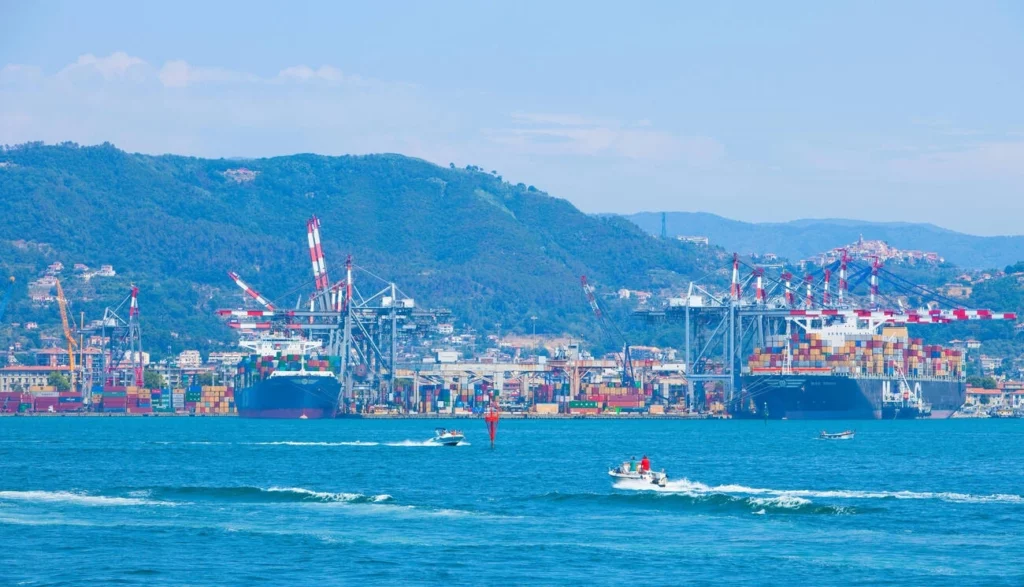
Located on the Italian mainland’s western coast, La Spezia is a major freight and container port with a view of the Ligurian Sea’s La Spezia Gulf, a route that is often travelled by commercial ships. The port, which has a long history that dates to the 1800s, has been essential to the delivery of maritime trade to the neighbouring areas. It is the second-biggest port in the country for cargo handling and a major Mediterranean port, with the Port of Genoa being the largest. Almost 20% of all TEU traffic in the country is handled by La Spezia.
With quays stretching over 5 kilometres and storage facilities reaching 400,000 square kilometres, the port is situated in a bay that is almost 75 square kilometres in size and is guarded by a 2.2-kilometer breakwater. The port serves 0.5 million people and handles 15 million tonnes of cargo annually. La Spezia has become a successful tourist attraction with new cruise terminals, yacht marinas, and private docks, beyond its industrial function. The port’s principal terminals include those for containers, bulk materials (solid and liquid), oil, roll-on/roll-off (ro-ro), and passengers.
Numerous maritime businesses, such as Muggiano Shipyards, San Marco Shipyards, Intermarine Naval Shipyards, Navalmare Offshore SpA, and many ferry services, are located at the port. Repurposed from a naval shipyard, Marina del Fezzano works with Navalmare Nautica to offer services connected to yachts.
Port of Salerno
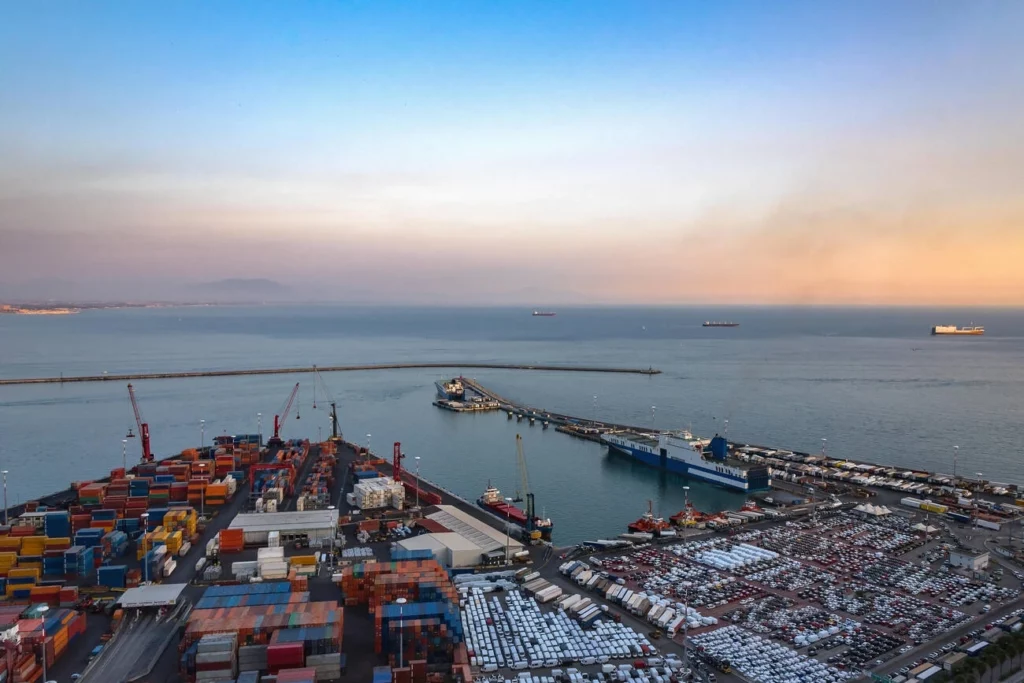
Salerno is an important medium-sized harbour on the Tyrrhenian Sea Gulf and a major contributor to Italy’s booming economy. Situated on the continental west coast, it is a key location on a principal maritime route that links several adjacent European, Asian, and African nations. Specialising in domestic shipping and serving commercial, industrial, and passenger ships, the Salerno Port Authority (SPA) is responsible for overseeing this Class 2 seaport.
Salerno is a natural harbour that uses a coastal breakwater to allow ships longer than 200 metres to dock. The average anchorage depth is 18 metres, while the cargo pier depth is 7 metres. The port saw the passage of about a million passengers and handled an incredible 60 million tonnes of cargo in 2018. The West Quay, East Quay, and Manfredi Pier are the three zones into which the port facility is separated strategically. The quays in the West Zone and East side are 1.2 km and 1.6 km long, respectively, while the pier is 400 metres long.
Port of Savona
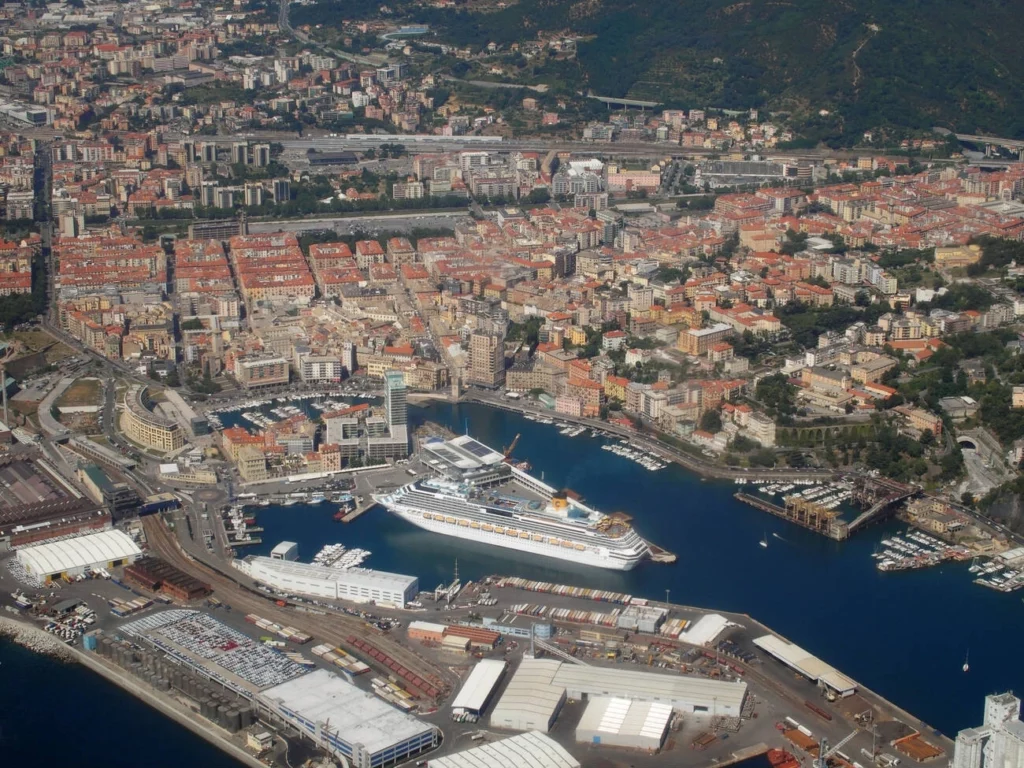
Located near the port of Genoa on the coast of northern Italy, Savona is a major passenger port that accepts a wide range of vessels, including pleasure boats, cruise ships, and ferries. The Porto di Savona has seen a noticeable increase in incoming traffic over the years due to its proximity to the city of Savona and well-liked tourist attractions. In 2017, it was ranked as the fourth busiest cruise port in Italy, with 2 million passengers passing through. Ferry services from Savona to Corsica and Sardinia are particularly well-regarded, and are run by Corsica Ferries and Saremar, respectively. Furthermore, the port has a personal vessel-only marina.
In addition to its popularity with travellers, Savona has a modest terminal that handles light cargo shipments, making it easier to import and export goods to the nearby hinterlands. With an average basin depth of 15 metres, the port serves a wide range of vessels, including breakbulk, ro-ro, bulk tankers, and container boats. Road connects Savona to the 50-kilometer-distance Genoa International Airport, which is an important centre for air and maritime transit.
Port of Civitavecchia
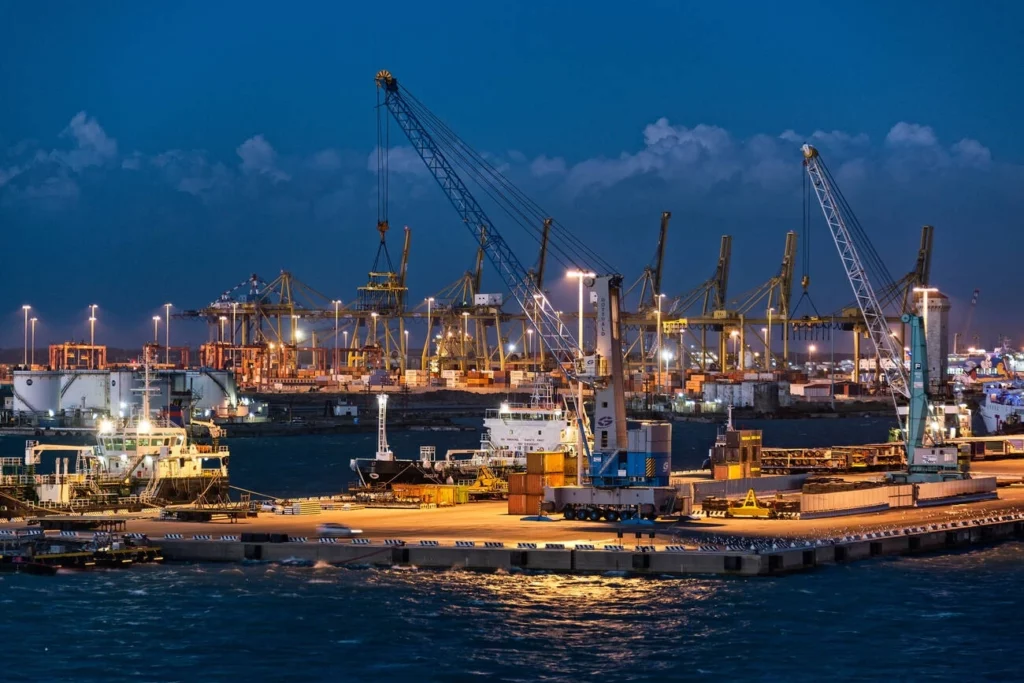
The Port of Civitavecchia, established by Trajan in 108 A.D., is located at Civitavecchia, which is 80 kilometres north of Rome on the Tyrrhenian Sea. This ancient harbour has developed into Mare Nostrum’s principal commerce hub, serving as a vital hub for Italy’s marine operations. The Port of Civitavecchia supports a variety of businesses, including the fishery, thermoelectric, and metallurgical sectors, and it is one of the busiest ferry ports in the world. It is an essential route that connects Central Italy to many other Mediterranean cities, including Tunis, Barcelona, Sardinia, and more.
Encompassed in the top 15 greatest Italian ports, the Port of Civitavecchia is rich in history, having been founded by Trajan in 108 A.D. The port handled 11.41 million tonnes of cargo through its docks in 2018 alone, demonstrating its continued significance in promoting trade and marine activities in the area.
Economic Impact and Modernization Efforts
Italian ports are vital commercial hubs that contribute to the country’s development rather than being just historical artefacts. However, trading necessitates ongoing innovation. By rewriting the narrative through modernization efforts like automation and environmental initiatives, these essential harbours will remain resilient and competitive in the long run.
Current Investments and Developments
Italian ports continue to innovate and grow. They are undergoing a dynamic metamorphosis driven by large investments and development projects as a result of realising the needs of a changing global environment. The following are some salient points:
Automation Revolution: Advanced technologies are rapidly transforming port operations, and software for logistics management plays a critical role in this evolution. Digital logistics platforms, combined with innovations like robotics, artificial intelligence, self-driving vehicles, and automated container terminals, are streamlining processes, boosting efficiency, and significantly reducing costs.
Sustainability Surge: People are becoming more mindful about the environment. Green efforts reduce carbon emissions by using eco-friendly cargo handling techniques, shore power facilities for docked vessels, and renewable energy sources.
Read more: Top 15 Busiest Ports in the World – Updated list
Infrastructure Expansion: Ports are upgrading their infrastructure significantly as a result of realizing the requirement for more capacity. Throughout Italy’s maritime environment, deepening dredging canals, growing container yards, and updating cargo processing facilities are typical sights.
Integration of Logistics: Ports are no longer separate entities. By utilizing road, rail, and multimodal freight infrastructure, they are progressively merging with inland transportation networks to form smooth logistics corridors that maximize cargo movement.
These advancements and investments are not only increasing port productivity and profitability, but they are also bolstering the local economies by generating new employment opportunities in the technology, sustainability, and logistics sectors.
Future Prospects and Challenges:
Although Italian ports enjoy unquestionable success, there are upcoming problems that call for conscious thought and smart preparation in order to maintain resilience and long-term profitability in the marine industry.
Competition: There is intense competition from nearby ports in Greece, France, and Spain. It will be essential to keep up a competitive edge through constant innovation and optimisation.
Technological Disruption: Employment may be lost as a result of the quick development of automation and digitalization. Programmes for retraining and upskilling will be necessary to guarantee port personnel have a seamless transition.
Environmental Impact: It will always be difficult to strike a balance between environmental sustainability and economic progress. Stricter environmental laws and investments in green technologies are essential for safeguarding the fragile maritime ecosystem.
Conclusion
Italian ports traverse a changing terrain while being rich in historical and economic significance. Favoured geographically, they are essential to international trade, and every port offers a different fusion of history and contemporary living. The picture of Italy’s maritime might began to take shape as we visited the top 15 ports, which ranged from the Adriatic jewel of Trieste to Civitavecchia, the marine entryway to Rome.
Modernization initiatives and economic effects highlight a revolutionary stage. Italian ports are making adjustments to the changing global environment through investments in automation, sustainability, and infrastructural development. These developments not only boost productivity but also open doors in the fields of technology, sustainability, and logistics.
But difficulties are coming up. While technology disruption requires workforce agility, intense competitiveness needs constant innovation. Maintaining environmental sustainability and advancing the economy must always be balanced. Italian ports are at a crossroads where their resilience and long-term profitability in the dynamic marine industry will be shaped by strategic insight, innovation, and a commitment to environmental responsibility.
GoComet offers a comprehensive suite of logistics solutions that can help you achieve complete control and increase the efficiency of your supply chain. With features like real-time shipment tracking, cost optimisation, streamlined procurement, and robust analytics, GoComet gives businesses the tools they need to plan ahead and succeed in logistics. Experience the GoComet difference by getting started right now.
